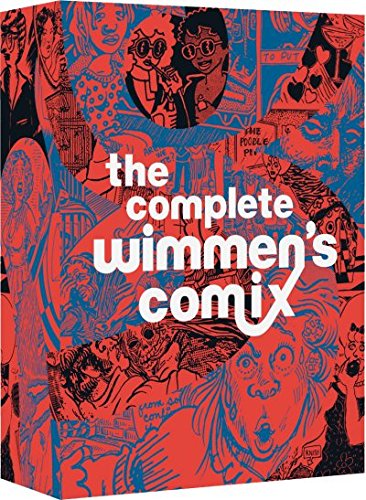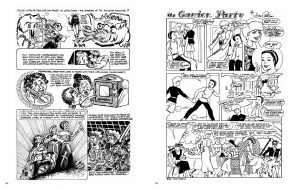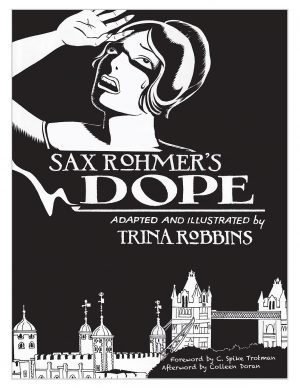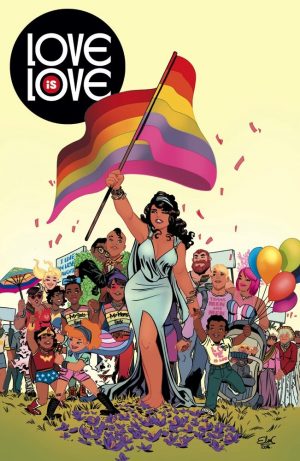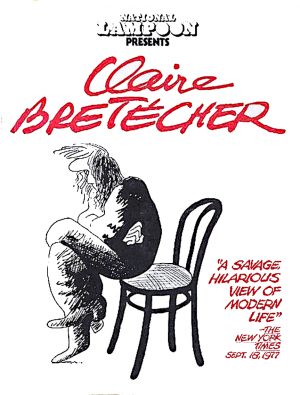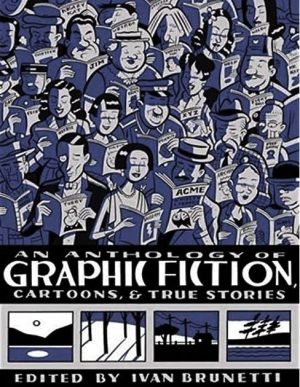Review by Frank Plowright
The strips presented in this two volume, hardback, slipcased anthology are of immense cultural importance, and a landmark in the history of comics. Trina Robbins provides an introduction contextualising this, and she was among the founders of the Wimmen’s Comix Collective, producers of the all-women anthology comic, although a spiritual predecessor, the one-shot It Ain’t Me Babe, curated by Robbins is also included. Wimmen’s Comix saw an initial flurry between 1972 and 1976, with the eighth issue, relaunched in 1982 beginning another run taking advantage of supposed new distribution opportunities.
In her introduction Robbins notes that a priority was giving women a voice, a result being much of the early content was by people who’d never produced comics before, which she mentions is apparent. That’s severely understating the case. Some contributors were good from the start (Robbins, Lee Marrs – both sample pages), some improve, while others drop by the wayside. However, unlike the fantasises produced by male underground artists of the era, most of this early content explicitly, sometimes very explicitly, catalogues the limited expectations for 1970s women and their actual experiences. It makes for uncomfortable reading, whether dressed up as self-deprecating comedy by Aline Kominsky or Robbins’ more pointed commentary about Rosie the Riveter from World War II waking up in the 1970s.
Egalitarian policy saw the editorship rotated every issue, but it made little difference to the content, which is never unified, veering all over the place from strips with attitudes not far removed from old romance comics to genuine calls to action. With each passing issue, however, more quality creators are added. There are certainly some highlights before the 1980s material, but it’s with those years that Wimmen’s Comix becomes more than an inclusive ideal. The incoherent, enthusiastic amateurs have gone, largely replaced by cartoonists who can draw, although some remain an acquired taste, and can tell their stories effectively.
Providing a theme for later issues further sharpens the contributions, and it’s with the theme of fashion that everything really pulls together, employing a greater fetishistic detail than found in the ‘International Fetish Issue’. Fun abounds from the dress-up costumes supplied by assorted artists to their responses to fashion. By this time 1970s regulars Joyce Farmer, Melinda Gebbie, Kominsky, Diane Noomin, Robbins, and Sharon Rudahl have allied with 1980s newcomers Alison Bechdel, Mary Fleener, Kristine Kryttyre, Caryn Leschen, Carol Moisewitch and Dori Seda, all of them producing funny observational strips. Stories themed around the occult, disastrous relationships, little women, and men follow, the quality curve heading ever upward until the kvetching theme, which results in too many obvious or unfocussed strips as a third generation of contributors is introduced. Perhaps the time was right to call it a day. Glasses are supplied for the 3-D issue, but if you’d prefer, the entire contents are presented two-dimensionally in the back.
Because so much of the 1970s content is hard going and unsatisfying it’s difficult to recommend Wimmen’s Comix in its entirety as anything other than social documentation. A couple of more selective Best of compilations would possibly make commercial sense as you’d be hard pressed to locate a single prominent woman cartoonist of the 1980s and 1990s who doesn’t contribute at least one strip.
